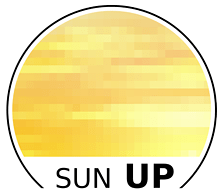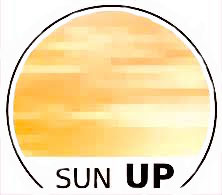Introduction
High investments required for CSP projects impose the need for high-quality solar data, which is essential in the planning and design of the facility as well as for its operation after completion. DNI data must be acquired for the precise location of the project site, due to its high spatial variability. Satellite-based models, which is currently the most common approach carried out in solar resource mapping and solar irradiance time series generation, introduce errors that are translated into bias and disagreement of DNI frequency distribution functions, which may lead to substantial uncertainties in the solar resource assessment. In this scenario, precise measurements of DNI at the sites of interest are indispensable for substantial CSP project development: a 1-2 % increase in energy conversion efficiency of a CSP plant can translate into millions of dollars in cost reductions for the CSP plant design and operation.
Concentrating solar power plants require primarily direct radiation, which is the part of the sunlight directly emitted by the Sun and hitting the Earth’ surface. As direct radiation is an approximately parallel beam of light, it may be easily concentrated by optical systems such as mirrors or lenses. As observed from Earth’s surface, the apparent size or angular diameter of the Sun is approximately 0.5°. We refer to this as solar disk. Commonly, the terminology Direct Normal Irradiance (DNI) is used and accounts for all radiation in the solar spectral range between 300 nm and 4000 nm within a 2.5° half-angle around the Sun’s centre.
When observing DNI at the Earth’ surface, there is always a portion of light, which is scattered forward by atmospheric constituents, but might have slight angular derivation compared to sunlight originating directly from the solar disk. This part of the solar beam coming from the ring up to 2.5° radius around the solar disk is called Circum-Solar Radiation (CSR).
In the context of the World Meteorological Organization (WMO, 2008), Baseline Surface Measurement Network (BSRN) established the first reference guide for the installation of solar radiation instruments (Mcarthur, 2005). The World Bank’s Sector Management Assistance Program (ESMAP) introduced the Multi-Tier Framework for measuring energy access. For solar measurement purposes, three configurations – or tiers – have become popular: Tier 1 to Tier 3. However, only Tier 1 and Tier 2 standards allow measurement or derivation of DNI. Together with other organizations, for CSP, Tier 1 and Tier 2 standards become applicable and are outlined in Classification of Solar Measurements for CSP according to World Bank. The solar measurement campaign provides data of high quality to a detailed profitability studies and the final plant design. Since even solar measurement equipment of highest standards may contain biased or distorted data, it is recommended to quality check all records. At best, consultancy services provide such post-processing of solar measurements as standardized procedure to enhance data quality and ensure representativeness of on-site conditions.
(D) Acceptance
Solar radiation measurements may be used for conducting the different phases of plant acceptance testing. The initial acceptance testing, that must be conducted and passed by the CSP plant typically includes a demonstration of the capability and efficiency of the major systems in the plant. Commercial Operation Testing is intended for the project to demonstrate to the utility or off-taker that the plant is ready to go into normal operation. Final Acceptance Test is typically a 12-month or longer performance test where the actual plant performance must achieve some level of performance in relation to the EPC’s performance model (Mehos et al., 2020).
Minimum or recommended values for the relevant specification items:
- Type of solar radiation instruments.
- Solar components: GHI, DNI and DHI.
- Uncertainty of solar radiation data: < 2 % (daily totals).
- Measurement devices: pyrheliometers and pyranometers: Good quality according to WMO or Class A according to ISO 9060.
- Maintenance:
- daily station maintenance: radiometers should be cleaned and checked (pyrheliometer alignment and pyranometers horizontality and shading)
- daily measured data monitoring to identify any issues with measurements.
- Time resolution: 1 min
- Time period: > 1 year
- Extended measurements: yes.
- Number of measurement stations required: >1.
| Users | ||||||||
| Proyect developers needs at diferent plant stages | Other users | |||||||
| Category of product service | (A) Pre-feasibility | (B) Feasibility & Design | (C) Due Diligence Financing | (D) Plant Accep-tance Test | (E) Systems or Plant Operations | (F) Grid operators | (G) Policy makers | (H) Education / Outreach |
| CONSULTANCY SERVICES ON SOLAR RADIATION MEASUREMENTS | ❌ | ✅ | ✅ | ✅ | ✅ | ❌ | ✅ | ✅ |
|---|---|---|---|---|---|---|---|---|
Measuring DNI using pyrheliometer.
Since CSP plants are based on the principle of concentrating solar radiation, it is indispensable to know the direction of incident irradiance. Accordingly, only sunlight that directly reaches the CSP’s mirrors can be harvested. Scattered light therefore is neglected in CSP energy yield estimates. Thus, direct incident irradiance is of preliminary interest to CSP projects. The physical value of irradiance is indicated as a function of the irradiated area. To specify the area’s orientation, solar measurements commonly record radiation incident normal to the direction of sunlight. This value is referred to as Direct Normal Irradiance (DNI).
A pyrheliometer enables the capture of direct sunlight – the preliminary driver for energy yield generated by CSP systems. As illustrated in Figure 4, the pyrheliometer’s narrow field of view and elongated cavity receives irradiance directly emitted from the Sun when positioned towards the sun. Today, operational pyrheliometers for commercial application are available from various manufacturers, such as EKO, Eppley, Hukseflux, Kipp & Zonen and Middelton. Here, it is of utmost importance to ensure the envisaged instrument complies with ISO9060:2018 Class A standards for Tier 1 and ISO9060:2018 Class B for Tier 2, respectively.

Measuring DNI using RSI
The principle of an RSI is to measure both global and diffuse irradiance. This is achieved by a fast-response photodiode mounted to the RSI’s head unit (see small black cylinder in Figure 5) and a curved blank band. At daytime, the black band rotates around the photodiode once every minute and thereby shades the sensor. Accordingly, the black band is called shadowband.
When the shadowband is stationary, the photodiode is measuring global irradiance. If the shadowband is rotating, the system can automatically derive the value of diffuse irradiance at the instant the sensor is shaded. From these two properties (global and diffuse irradiance) and the Sun’s elevation angle, DNI may then be derived. Figure 5 shows an example of such an RSI. The motor to drive the shadowband sits within the casing and is power consuming. Consequently, solar measurement systems that consider RSI systems need to consider enhanced power demand.
In analogue to the pyrheliometer’s market, several manufacturers offer RSI systems for commercial use and differ in both design and technical specifications. Commonly, consultancy services that offer solar measurement campaigns have a certain brand or type they collaborate with and which they will promote. It is more important to bear general recommendations and standards in mind. An internationally recognized collected edition such as NREL’s Best Practices Handbook (Sengupta et al., 2017) and standards such as ISO9060 and IEC 61724-1 are specific examples. Both classification standards provide instrumentation guidelines for particular applications, such as solar measurements.

Currently, popular models for RSIs are for instance Reichert GmbH’s RSP 4G (seen in Figure 5), Irradiance Inc.’s RSR2, Yankee Environmental Systems, Inc.’s SDR1 and CSP-Services GmbH’s Twin-RSI. As aforementioned, such systems rely especially on measurements while the shadowband is turning. Since one rotation takes approx. only 1 second, most of RSIs use a detector (photosensor) with a fast response time. The required fast response time is the reason why thermopile sensors are not usually employed here. Instead, silicon-based semiconducting sensors are commonly used. An example for such is Li-COR’s Li-200SA, which is installed on the RSP 4G (see Figure 5).
Measuring DNI using alternate instruments
Since tracked systems commonly provide the highest level of accuracy, these are the preferred choice for CSP-relevant solar measurements. However, there are various systems that allow measurement or at least derivation of DNI. One such instrument is Delta-T Devices, Ltd. SPN-1 where an array of seven thermopile pyranometers is assembled under a glass dome. The glass dome is equipped with a shading mask, which is specifically designed to ensure that at least one of the sensors is shaded and one is unshaded at any time of the day and year (Sengupta et al., 2017). The benefit of such a system with no moving parts is clearly the reduced requirements in power supply and lower maintenance requirements but comes with large systematic biases (Vuilleumier et. al, 2017).
Another instrument that enables DNI measurement is the Scanning Pyrheliometer/Pyranometer (SCAPP) or the sunshine duration sensor of type Soni e3. The latter requires great effort in station maintenance while both systems are less accurate than tracked systems. Thus, in alignment with NREL’s Best Practices, DNI measurements are recommended to be based on tracked systems. The characteristics such measurements achieve are provided in the following section.
Extended measurement instruments for CSP
While solar measurements are of major interest to CSP projects, a broad choice for extended investigations is available. Cost-efficient solutions are briefly mentioned.
Although solar measurement stations for CSP applications are designed to capture only direct sunlight, measurements are affected by the Sun’s circumsolar region. Depending on atmospheric conditions, the magnitude of the circumsolar irradiance varies. Since all CSP systems rely on precise deflection of direct sunlight, the circumsolar share does not contribute to energy production. Accordingly, to determine DNI and the consequent energy yield precisely, such scattered light must be considered. Therefore, so-called Solar Aureole Measurement (SAM) devices are employed (Wilbert, 2014). SAM devices allows determination of the share of DNI that will not contribute to energy production and, thus, increases the reliability of power performance prediction. A recommended device for circumsolar radiation measurements is a so-called ISE-CSR camera.
Further recommended services for CSP target technical aspects of plant operation and are not directly related to solar irradiance measurements. However, soiling measurement systems may be considered alongside solar measurement stations and offer cost-efficient analysis. By adding reference cells (see assembly on the left in Figure 5) to ground-based solar measurement stations, consultancy services for solar measurements can help analyze the expected soiling impact. By doing so, best practices for cleaning schedules can be determined and thereby will maximize energy yield under consideration of plant maintenance expenses.
Finally, it is also recommended to include measurements of:
- Global irradiation.
- Diffuse irradiation.
- Wind speed and direction.
- Ambient temperature.
- Humidity.
All these instruments do not add significant cost to the measurement station but provide improved quality control of the DNI measurements.
The relevant features for the application of solar radiation measurements in CSP are:
- Type of instrument for DNI measurement. The type of instrument fixes the uncertainty range and maintenance needs.
- Uncertainty. Must be lower when the stage of the plant is more advanced.
- Maintenance. It is well related to the uncertainty, and more frequent maintenance results in lower uncertainty.
- Time resolution. From hourly data to one minute data.
- Time period. Global period goes from few months to online measurements.
- Extended measurements.
- Number of measurement stations required.

